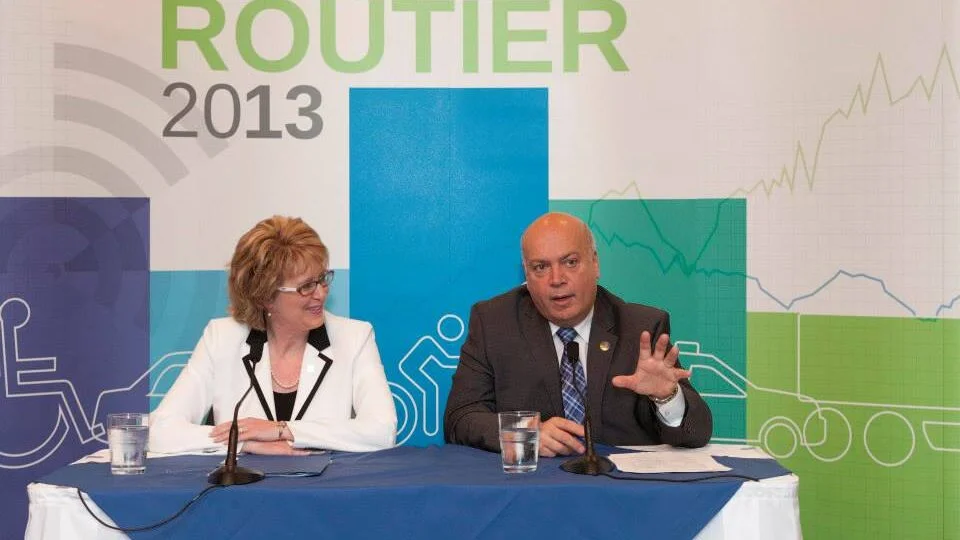Registering your car, paying for your license, selling your vehicle... For most Quebecers, the SAAQ is a bureaucratic waiting room where you sit for hours. Yet it has a very important role to play in the province: compensating the victims of road accidents.
For many, the state-run insurance company works as it should. However, since the reform of its insurance model in the early 2000s, the Société d'Assurance Automobile du Québec (SAAQ) has become too many people's nightmare.
It makes private investigators tail its claimants, it turns up its nose at injuries, it drops accident victims after 67 years of age, it doesn't recognize accident victims' occupations… How did it come to this?
Government looks the other way
North Star isn't the only media outlet to unmask SAAQ controversies. In March 2019, Radio-Canada's Enquête revealed that only 15% of accident victims win against the SAAQ at the Tribunal Administratif du Québec (TAQ), a worrying rate compared to other services such as the CNESST.
In 2022, journalist Esther Normand of “La Facture” also highlighted the endless conflict between accident victims and the SAAQ, telling the absurd story of an employee deemed unfit by her doctors and employer-the SAAQ's permit department-but whom the SAAQ's insurance division wanted to send back to work.
The private Facebook group Accidentés de la route en Litige avec la SAAQ is overflowing with similar testimonials.
Members of the group occupied the front of the SAAQ offices for two weeks last September. Despite years of effort by the group and its president, Christiane Vallière, only Étienne Grandmont, a member of parliament from a small opposition party, agreed to listen to their demands. The government, for its part, continues to turn a deaf ear.
A clear problem, a necessary solution
First of all, a little background is needed to understand where these problems come from.
In 2004, the SAAQ was in dire straits. Its annual revenues are 743 million, but its expenses are 1.191 billion. The deficit is extreme, and insurance premiums have risen only slightly over the past 20 years.
In 10 years, from 1994 to 2004, the cost of compensating accident victims has risen by 75%, while the number of people injured has remained relatively stable. The problem is glaringly obvious, and managers calculate that, if they do nothing, there won't be a penny left in the fund managed by SAAQ in 2018.
To turn things around, the state-owned company hires Nathalie Tremblay, an accountant, as Vice President of Accident Services. She launches the “insured turn” reform, aimed at a complete overhaul of claims management.
Her team identified two areas for action. The first was to reduce accidents through prevention campaigns, which proved fairly effective over time.
But the second is more worrying: to start evaluating files on the basis of the “risk” they represent, in order to limit “unnecessary” payments— a vision imported directly from the for-profit sector.

Turning towards private insurance techniques
For private insurers, the main aim of the operation is not to provide a service to the public. Rather, the aim is to maximize profits for their shareholders, and thus limit insurance claim payments. Over time, this has led them to develop complex valuation methods to avoid any risk of fraud, often abuse.
For example, Promutuel Assurance points out that a poor credit rating can increase the cost of insurance, penalizing workers in financial difficulty. Similarly, an employee who can only find housing in Montréal-Nord, Vancouver's Downtown Eastside or Scarborough, because of his or her low income, for example, will see his or her premiums increase because of the higher crime rate in these neighborhoods. They are “more at risk”.
Although no information from the SAAQ confirms the use of these criteria, they do illustrate private-sector practices.
So, how does SAAQ say it assesses risk? It uses the risk of extending indemnity payments. The turnaround is designed to redirect resources to those cases where the corporation is taking the “red line” route.
These are the cases that are most likely to be long-term—“chronic”. She identifies the following risk factors: number of injuries, psychological diagnosis, injuries incompatible with the injured person's job, medical history, perception of pain, search for explanations for pain, and job dissatisfaction/precariousness.
All these factors are used to predict whether a person might want to extend their benefit payments. The SAAQ seems to believe, for example, that a psychological diagnosis can block a return to work, as can a job that pays poorly or is unsatisfactory for the injured worker.
All this costs the state insurance company money. It has therefore set up teams to investigate, assess and monitor these particular cases. In some cases, these teams are effective in getting people back to work. However, it is this obsession with limiting chronicity that seems to lead to abuse.
North Star has gathered testimonials, such as Kevin's and Lise's, which show that the result has often been a hasty, even forced, return to work. What's more, the SAAQ has increasingly adopted highly invasive techniques such as shadowing by private investigators.
A “public” institution well integrated into the capitalist market
All this has enabled the state-owned company to reduce its deficit, but it has come at a high price.
According to the SAAQ, the “insured turn” reform also enabled it to reduce the size of its internal bureaucracy. But did it actually partially displace it, by increasing the duration and intensity of challenges to its decisions?
There's no way of knowing for sure. But his contribution to the Tribunal Administratif du Québec (TAQ), which manages his litigation files, has risen from just over $7 million in 2004 to over $20 million in 2022, an impressive 128% increase in 18 years. Inflation over this period was 53%.
It's also worth noting that in 2019, it took an average of eight and a half months to receive a response from the government corporation following the contestation of a decision, and more than two years to go to court. If the SAAQ has abusively decided to stop paying you compensation, two years without income is a long time.
In the end, Natalie Tremblay's 2004 “insured turn” reform was right on target. Since the 1980s, governments have been working in the shadows to dismantle, brick by brick, the gains of the workers' struggles of previous decades.
To do this, they ensure that “social” institutions are well integrated into the capitalist market. This limits state spending, limits the financial contribution of companies, and encourages the investment of public funds in private enterprise.
This is the principle of the “New Public Management”, first promoted by Thatcher, Mulroney and their collaborators in the major multinationals and the OECD. Today, it is still generally promoted by consulting firms such as McKinsey & Co. and by international ruling-class organizations such as the IMF (International Monetary Fund) and the World Economic Forum.
- “It’s time to act, before everyone ends up dead”
- Quebec’s public auto insurer creates bureaucratic hell for road accident victims
- When surveillance becomes a weapon against road accident victims
- Road accident victims left to fend for themselves over the age of 67
- The SAAQ operates like private insurance, and the human cost is enormous
- Letter: The promise to road accident victims has been betrayed
- Letter – “Enough is enough, SAAQ, hear my cry”


